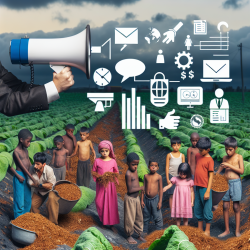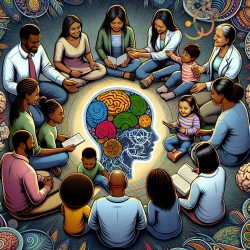Introduction
The tobacco industry is a multi-billion-dollar global powerhouse, yet it harbors a dark secret—child labor. The research article "Child Labor in Global Tobacco Production" by Athena K. Ramos reveals the stark realities of child labor in this sector and its implications on human rights. As practitioners dedicated to improving outcomes for children, it is crucial to understand these findings and explore how we can contribute to change.
Understanding the Research
Ramos' research highlights the prevalence of child labor in tobacco production across countries like the United States, Kazakhstan, and Malawi. Despite international conventions such as the United Nations Convention on the Rights of the Child (CRC) and the International Labour Organization’s (ILO) conventions, child labor persists due to weak enforcement and economic pressures.
Children working in tobacco fields face hazardous conditions, including exposure to harmful chemicals and long working hours, which can lead to severe health consequences. The research calls for a human rights-based approach to address these issues, emphasizing the need for international cooperation and stronger legal frameworks.
Implications for Practitioners
As speech-language pathologists and educators, understanding the broader context of child labor can enhance our practice. Here are some actionable insights:
- Advocate for Education: Encourage policies that prioritize education over child labor. Education is a powerful tool in breaking the cycle of poverty and exploitation.
- Raise Awareness: Use your platform to educate others about the realities of child labor in tobacco production. Awareness can drive policy changes and consumer behavior.
- Support Research: Engage in or support further research on the impacts of child labor on cognitive and language development. This data can inform interventions and policy advocacy.
- Collaborate with NGOs: Partner with organizations working to combat child labor. Collaborative efforts can amplify impact and bring about systemic change.
Encouraging Further Research
The complexity of child labor in tobacco production requires ongoing research. Practitioners can contribute by exploring the intersection of child labor and developmental outcomes. Understanding how hazardous work environments affect language and cognitive development can inform targeted interventions and support advocacy efforts.
Conclusion
Child labor in tobacco production is a pressing human rights issue with far-reaching implications. As practitioners, we have a responsibility to advocate for the rights and well-being of children. By leveraging research, raising awareness, and collaborating with like-minded organizations, we can contribute to meaningful change.
To read the original research paper, please follow this link: Child Labor in Global Tobacco Production.










